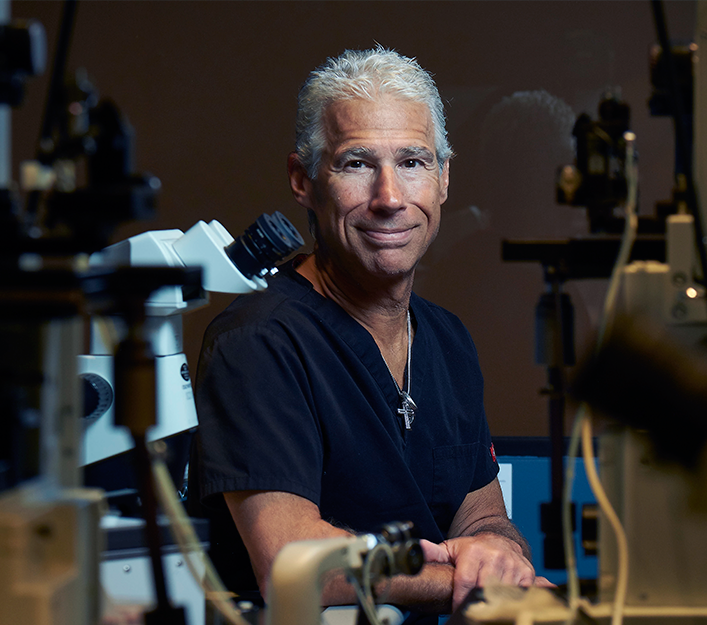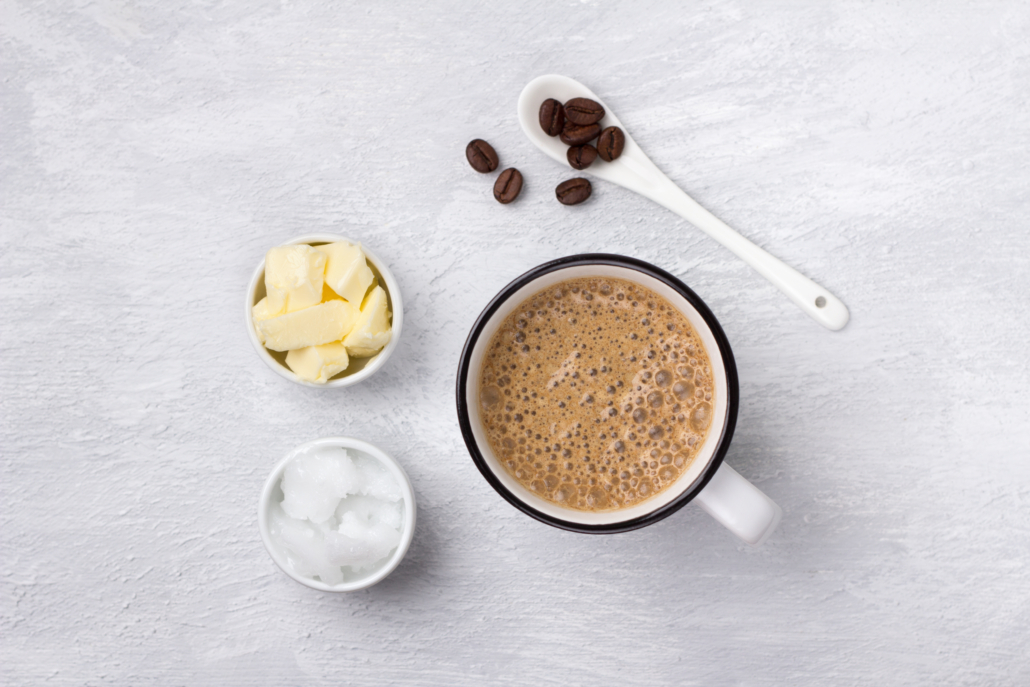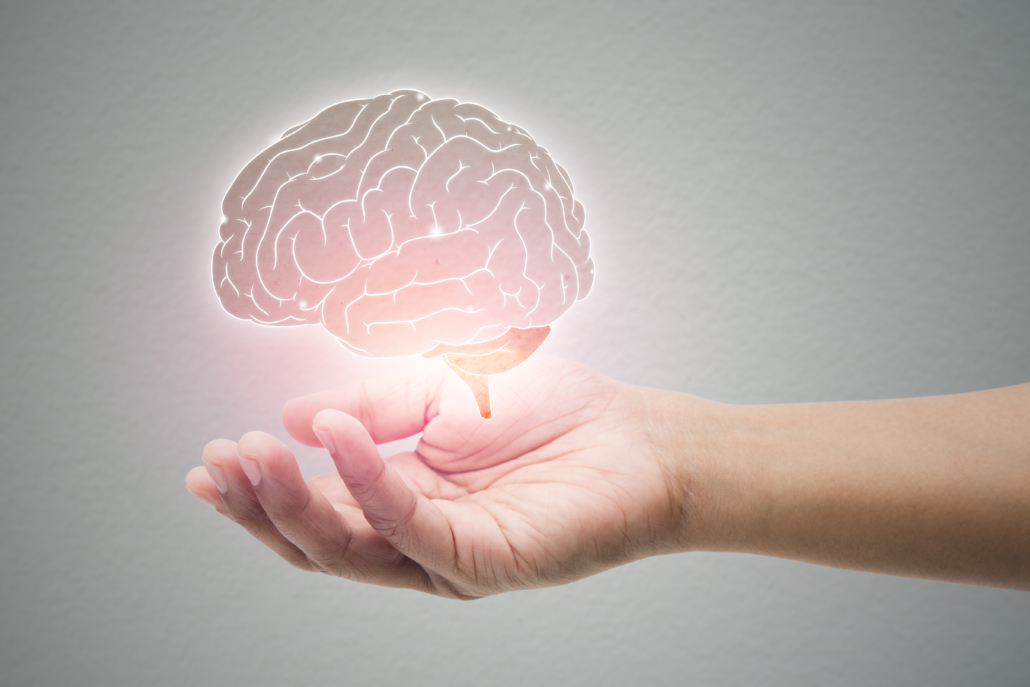We include products in articles we think are useful for our readers. If you buy products or services through links on our website, we may earn a small commission.
Low Carb vs. Keto: 10 Things You Should Know
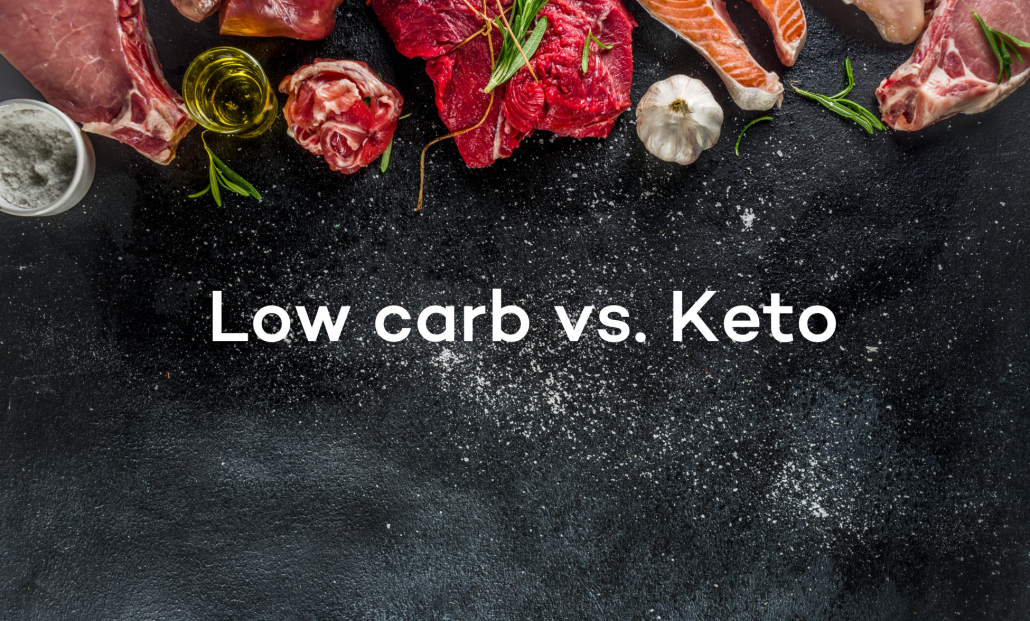
Table of Contents
- What’s a Low Carb Diet?
- What’s a Keto Diet?
- Why Fat is the Perfect Fuel
- 1. Low carb vs. keto: A shared history
- 2. Low carb vs. keto: both are well-researched
- 3. The keto diet is simpler than low-carb
- 4. The keto diet really reduces cravings
- 5. The keto diet is higher in nutrients than low-carb…
- 6. …and lower in antinutrients
- 7. The keto diet may provide more energy
- 8. The keto diet may be better for anti-aging
- 9. The keto diet may be better for our hormones
- 10. The keto diet may promote more weight loss
- The Bottom Line on Low Carb vs. Keto
Low carb and keto are two popular ways of eating that both revolve around limiting one’s carb intake. But when it comes to low carb vs. keto, which diet is better?
Even with their similarities, low carb and keto have significant real-world differences:
- Low carb diets usually range from 20-100 grams per day.
- Keto usually ranges from 0-25 grams of daily carb intake.
- On low carb diets, protein and fats are fair game.
- A keto diet requires that you get 75-85% of your calories from fat, and only 15-25% from protein.
Because of this emphasis on fat, keto works differently, feels different, and tends to make people look different than low carb diets.
In this article, we’ll be looking into the ins and outs of both low carb and keto. We’ll begin with some similarities before diving deep into the differences. Enjoy!
What’s a Low Carb Diet?
As you might expect, a low carb diet is a way of eating that restricts dietary carbs to between 20 and 50 grams per day. Grains, sweets, and sugary beverages are obvious foods targeted for reduction.
Most low carb diets contain only 10-30% of their calories as carbs, which is a significantly lower percentage than the standard American diet. Low carb diets tend to sub out the missing carbs with more fats and proteins. And because high-calorie junk foods are eliminated, low carb diets are often at least a little lower in overall calories, which promotes weight loss.
Low carb diets have been linked to all sorts of health benefits. Studies show that they’re especially useful for people with diabetes and weight problems . The Atkin’s diet, which keeps carbohydrate intake fairly low, is a popular type of low carb diet.
Other upsides of a low carb diets include:
- Flexibility
- Sustainability
- Fewer restrictions than keto
- Easier to adapt to (no keto flu)
What about going even lower in net carbs, you might ask? Diets that contain less than 10% of their total calories from carbohydrates are known as very low carb (VLC) diets. Restricting one’s carbs to such a degree leads to a powerful metabolic state called ketosis.
What’s a Keto Diet?
The keto diet is a very low carb (VLC), very high-fat diet that’s gained mainstream popularity in recent years.
Short for the ketogenic diet, keto places the body into pure fat-burning mode by triggering the production of ketones.
Ketosis has uniquely therapeutic properties that go beyond mere carb reduction. It can treat epilepsy, promote fast weight loss, and even slow the growth of certain types of cancer. , .
One of the more basic goals of a ketogenic diet is to reach nutritional ketosis. This special state begins to kick in when you’re consuming less than 50 grams of carbs per day. Sensing that it’s running low on carbs, your liver will begin to produce ketone bodies from the fats that you eat. These ketones, in turn, provide a steady source of diesel fuel for both body and mind.
To meet the macronutrient ratios of a keto diet, most fruits and vegetables are restricted. This is because all plants are made of carbohydrates and broken down into glucose (sugar) when digested. Your body can’t tell the difference between lettuce and a lollipop. Additionally, keto is often practiced for its anti-inflammatory benefits. Plant foods are loaded with plant toxins and antinutrients that can be harmful to your health.
Some people find the keto diet restrictive. No fruits and veggies? No starches?
If you’re one of those people who believes that discipline = freedom, then keto is probably just what you’re looking for. Other benefits of keto include:
Why Fat is the Perfect Fuel
Dietary fats are found throughout both the animal and plant kingdoms — including in many of the foods that we eat. Fat provides your body with plenty of energy, sure, but that’s just the start. Dietary fats:
- Make your meals more filling
- Regulate hormones and immunity
- Help you absorb fat-soluble vitamins (K, D, E, etc)
- Maintain healthy skin, hair, and nails
And don’t let medical dogma scare you aware from fat’s nutritional importance. Contrary to popular belief, saturated fats do not increase the risk of heart disease or cardiovascular disease.
Take it from these doctors:
“People have been recommending low-fat diets for 30 years, and then it turns out to be completely wrong! There is no proven correlation between saturated fats and CVD”.
– Fredrik Nyström, Professor of Internal Medicine, Linköping
“It’s time to face the facts. There is no connection between saturated fats and CVD”.
– Peter Nilsson, Professor of Cardiovascular Research, Lund
We’ll get into all the nitty-gritty details a little later, but for now, just know this:
fat is a nourishing, healthy, safe source of calories that humans have been enjoying for thousands of years.
Okay, it’s time to put low carb and keto head to head! We’ll start with two important similarities before getting into eight equally-important differences…
1. Low carb vs. keto: A shared history
First things first:
Humans have been eating low carb/keto since practically the beginning of time.
Food wasn’t always as abundant as it is now, and our ancestors couldn’t just drive over to the grocery store to get their next meal. Alternating between periods of scarcity and periods of plenty was the norm. And when plenty of food was available — like after a successful hunt — it usually took the form of energy-dense animals. Carbohydrate sources were hard to find, often only accessible after lots of (carb-burning) effort.
In other words, our ancestors spent a lot of time eating low carb…and a lot of time eating nothing at all. The original paleo diet? It was also ketogenic.
Even our body composition provides some clues about just how natural keto is. We humans are 73 percent fat, 25 percent protein, and two percent carbohydrates. Our brains are 60% fat, too. Why not eat according to these ratios? Fat is the medium through which all types of good things happen — it cushions our nerves, protects our vital organs, and helps regulate hormones.
Western medical research began catching on to these concepts in the 1920s. That’s when researchers from Johns Hopkins University started using fasting to treat patients with seizure disorders and diabetes. These researchers didn’t know why fasting would be able to have this effect, especially given that these conditions were completely unrelated.
But they began searching for a sustainable diet that could mimic the effects of fasting anyway. After plenty of trial and error, they found such a diet in the form of keto! Patients who’d previously been forced into fasting could start eating again and still stay seizure/diabetes-free.
Fast forward to the present time, and many people are having the same sort of success with a modified ketogenic diet. This diet features slightly higher levels of carbs (it’s still low carb) and balances them out with MCT oil.
2. Low carb vs. keto: both are well-researched
Another similarity between low carb and ket? They’re both well-researched.
And much of this research has produced similar findings. Both low carb and ketogenic diets have been found to foster weight loss, optimize insulin levels, and increase satiety. In other words, limiting carbs to any degree seems to coax the body into processing energy better.
Both diets have clear advantages over going the low-fat route, too. “Low-carbohydrate diet effective for adults,” says the title of a 2003 study.
A more recent meta-analysis described something similar : “VLCKD [very low carb ketogenic] dieters achieve a greater weight loss than those assigned to a LFD [low-fat diet] in the longterm.” Study after study after study has shown that low-carb diets promote faster, easier weight loss than low-fat diets, even if calorie intake remains the same!
Older studies affirm the benefits of a low-carb, high-fat approach, too — especially if said fat takes the form of saturated animal fat. A 40-year-old report recently found in the dusty basement of a Minnesota university (yes, really) found that saturated fat was far better than polyunsaturated fat for longevity, even though it raised cholesterol levels more.
3. The keto diet is simpler than low-carb
One of the most practical benefits of keto is its simplicity.
All you have to do to stay in compliance is avoid carbs and sugars, and eat fat. The same can’t be said of low-carb diets, which usually require careful macronutrient tracking in order to stay at the right carb intake. Can you have one apple for dessert, or do you need to cut back and stick with blackberries? That depends on what you had for breakfast. We don’t know about you, but for us, this type of inner dialogue seems pretty taxing.
With keto, however, it’s simple: just eat fatty animal products whenever you’re hungry! If you tolerate them, full-fat dairy products are great too.
We’ll get into how to really maximize your keto nutrition soon, but the basics of keto are simple. 20% of the effort might just give you 80% of the results. Most people don’t have to count daily calories or protein intake to experience positive changes.
4. The keto diet really reduces cravings
When it comes to comparing low carb vs. keto, it’s important to consider the stressful nature of low-carb diets and how they can lead to unpredictable cravings.
Let’s say you eat those blackberries for dessert…and are still hungry. Far from being satiated, that tiny bit of carbs triggered your hunger hormones and just made you crave carbs even! Many people don’t have the willpower to say no in this type of situation. What was supposed to be a 100-gram-of-carbs day soon spirals out of control.
These types of cravings are unfortunately common — on most diets, that is.
But keto is different. The ketogenic diet can powerfully reduce cravings since it places your body entirely into fat-burning mode. If you have any body fat to lose, keto can help your body access it. Studies have also shown that keto blunts the rise of hunger hormones, like grehlin, that normally swell to uncontrollable levels during periods of dieting. Even if you’re already at your goal body weight, keto promotes stable blood sugar levels that tend to keep sugar cravings to a minimum. Interested in intermittent fasting? Many people find IF significantly easier when their meals are keto.
5. The keto diet is higher in nutrients than low-carb…
Here’s another reason keto rules:
It’s the best way of eating out there when it comes to getting in those healthy fats.
Many keto diets contain up to 80% of their carbohydrates from fat. Some people experiment with going even higher!
Why is such a high fat intake preferable? We’ll get into the sciencey details a little later, but for now, let’s talk nutrients. If you get your fat from whole foods sources, you’ll also be getting all the fat-soluble vitamins your body needs to function at its best, including vitamin A, vitamin E, vitamin K2, vitamin D, and more.
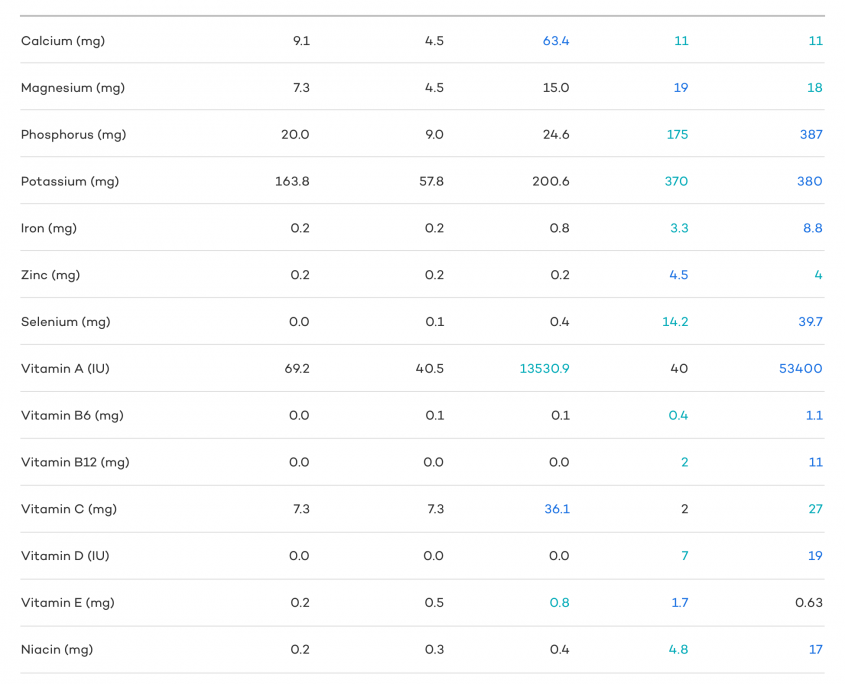
Entire books could be written about each of these compounds — actually, they have. Let’s just say that vitamin K2 alone is so important that it’s called “activator X” because of its ability to ‘activate’ bone and joint health.
Healthy fats are also rich in anti-inflammatory, mood-regulating molecules. Some fats even activate cellular receptors and help your body send important messages! The fatty compounds in dark chocolate, for example, can boost your mood by regulating your body’s endocannabinoid system. And the fatty acids in coconut oil are so antibacterial that researchers have tested them against staph infections.
6. …and lower in antinutrients
Just as important as the nutrients a ketogenic diet contains are the antinutrients it removes.
What are antinutrients? They’re food substances that prevent one’s body from absorbing nutrients properly.
Many fruits and vegetables are full of antinutrients, and these substances actually cause a net nutrient loss when absorption rates are considered. Leafy greens like spinach, for example, is often praised for its vitamin K content…but in reality spinach’s vitamin K1 comes bound by problematic compounds. And it’s not even in a form that’s easily absorbed! Grains and legumes are also high in antinutrients, including phytic acid, which can reduce the absorption of everything from iron to calcium.
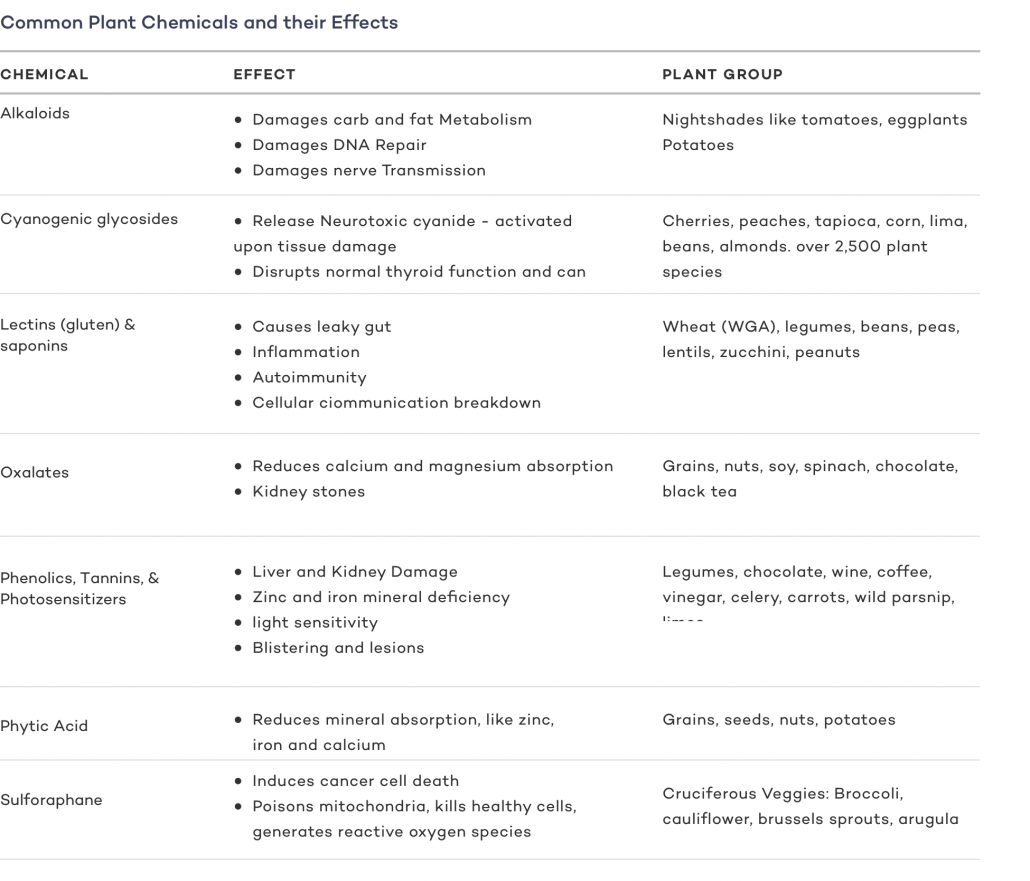
The idea that plants aren’t an ideal food source might seem surprising at first, but consider things from the plant’s perspective. Just like humans and other living creatures, plants are evolved to accomplish one goal, and that’s to reproduce. Being a healthy food for humans is rarely in a plant’s best interest. Just as many animals evolve camouflage and poisons for protection and perpetuation, plants are equipped with an arsenal of chemicals that protect them from pests and environmental factors like fungus and mold. These toxins include naturally-occurring lectins, pesticides, mineral chelators, and antibiotics.
The type of ketogenic diet we recommend keeps these compounds minimized by staying animal-centric. Instead of eating a salad topped with oil and cheese for lunch, we’d eat a steak with a small side of mushrooms. Vegetables become even less necessary if have access to organ meats — they’re surprisingly nutrient dense.
An animal-based keto diet also minimizes plant fiber. Wait a minute, you might be thinking…isn’t fiber important too?
Not exactly. Fiber from plants ferments in our bodies as it breaks down. When you chew fiber, you simplify it and expose it to bacteria and yeasts that feed on it during the process of digestion. Fermentation of plant materials produces heat, gas, aldehyde, alcohol, and methane. This exothermic reaction heats and damages local organs and tissues.
Have you ever looked outside at a compost pile in the winter? It’s steaming! Many of the processes taking place in compost are heating the fiber in your gut — the part of you that sits directly on top of your reproductive organs.
As a fertility specialist, Dr. Kiltz has observed that the constant sugar and fiber fermenting in our bowels spreads heat and inflammation to tissue and organs throughout the entire lower abdominal region…including our tubes, ovaries, uterus, prostate, seminal vesicles, and testicles.
Given that our reproductive organs are designed to function at a very specific body temperature, this is not good. When excessive fermentation is taking place right beside a women’s ovaries, the temperature can rise substantially above optimal conditions for egg development.
What about the widespread belief that fiber is good for colon health and that it protects against cancer? It’s a total myth.
A truly eye-opening study in the World Journal of Gastroenterology looked at all the studies over the previous 35 years investigating the link between fiber and colon health:
“A strong case cannot be made for a protective effect of dietary fiber against colorectal polyp or cancer. Neither has fiber been found to be useful in chronic constipation and irritable bowel syndrome. It is also not useful in the treatment of perianal conditions. The fiber deficit-diverticulosis theory should also be challenged…we often choose to believe a lie, as a lie repeated often enough by enough people becomes accepted as the truth. We urge clinicians to keep an open mind. Myths about fiber must be debunked and truth installed.”
7. The keto diet may provide more energy
For more proof that fat is the ideal human fuel, look no further than how easily our bodies process it into usable energy. One calorie of fat provides far more ATP (energy) to our cells than one calorie of any other macronutrient. Fat-derived ATP is also the preferred energy source for the heart.
In addition to providing more energy to the body than other macros, fat also provides more energy to the brain.
| Glucose (Carb) Energy | 3-Hydroxybutyrate Ketone (Fat) |
| 8.7 kg of ATP per 100g | 10.5 kg ATP per 100g |
Why’s this so important? Because the human brain is an energy hog. While some researchers look to other species, like monkeys, for proof of why humans should be on a low-fat, fruit-based diet, the reality is that our bioenergetic demands are totally different than theirs.
So different, in fact, that many experts believe that high-fat eating was what allowed us to evolve into the brain-boosted species we are today. Eating nutrient-dense animal foods is the most efficient way to keep the brain fueled to this day.
Diving a little deeper, our mitochondria also seem to love running off of fat. Stearic acid (found in dairy products, cocoa butter, and beef) is especially pro-mitochondria. While it was once thought that the Mediterranean diet and its focus on olive oil were ideal, new research is showing something very different.
Studies have shown that stearic acid can boost the function of these little energy-producing factories enough to reduce Alzheimer’s disease symptoms, regulate blood sugar levels, promote lean muscle mass, and decrease abdominal fat . Mice that are overfed stearic-acid-rich diets don’t even gain weight!
What makes all these benefits possible? Zooming in on mitochondrial activity shows us.
A 2018 study found that mitochondria self-organize into highly efficient circular structures when fueled by stearic acid. This phenomenon is known as mitochondrial fusion. It’s likely that ingesting other saturated fats has a similar effect, so be sure to get your grass-fed beef in.
8. The keto diet may be better for anti-aging
Chances are good you’re familiar with antioxidants and have a general idea of why they’re so good for us. Eating your fruits and vegetables, you’ve probably been told, to make sure you’re getting adequate antioxidant intake!
But the full story, as is often the case when it comes to nutrition, is a little more contextual.
Here’s an example: one’s vitamin C demands actually drop way down when carbs are taken out of the picture. That’s because vitamin C and glucose are similar enough, on the molecular level, that they sort of compete for the same biochemical pathways.
Need proof of this? In 1928 arctic explorer Vilhjalmur Stefansson was kept on a fully carnivorous diet for a year without developing vitamin C deficiency or other side effects. Researchers from New York’s Bellevue hospital attested that Stefansson stayed in great health throughout the experiment. “[I] did not get scurvy on the fish diet, nor learn that any of my fish-eating friends ever had it,” he commented later.
Chronically high carb diets can also deplete the body’s reserves of its own inner antioxidant, glutathione, while ketogenic diets seem to boost glutathione levels.
To put these concepts in simple terms, would you rather eat a high-sugar, highly oxidative diet, and attempt to counter all the damage with extra antioxidants — or a high-fat, much less oxidative diet that still contained some antioxidants? To us it’s clear that the high fat route is the way to go.
And the keto diet’s lower oxidative burden isn’t just good for slowing down the aging of your heart, brain, or other internal organs. It can have tangible effects on your outward appearance, too.
In other words, keto may be great for your hair, nails, and skin. Its rich blend of fat-soluble vitamins and trace minerals contains everything you need to have healthy skin.
Just as significant is the thing keto doesn’t have: sugar. Sugar intake can actually cause your connective tissues to harden and break down through a process called glycation. Sugar may also promote the formation of lipofuscin, or age pigment, which builds up over time as a person ages and eventually contributes to neurodegeneration and death.
Not to be morbid or anything — keto may provide a way out. For a perfect example of keto’s anti-aging effects, look no further than keto bodybuilder Luis Villasenor. Now 44, Luis has been on a high-protein keto diet for just over 20 years. One look at him and it’s obvious that something about the way he’s eating has made time almost stand still.
While N=1 examples aren’t exactly the pinnacle of nutritional science, they’re far from meaningless! We’d challenge you to find a 40+-year-old proponent of non-ketogenic diets that looks quite as young, healthy, and unoxidized as Luis does.
9. The keto diet may be better for our hormones
We’ve all heard of hormones, but for most people, what they do in our bodies remains a mystery. Let’s take a moment to demystify these important molecules. What are they?
Hormones are chemical messengers that orchestrate many of the body’s biological processes including reproduction.
Along with providing essential fats, a high fat diet based around animal products provides another key component to fertility: cholesterol. Several of the most important reproductive hormones (including estrogen, progesterone, and testosterone) all derive from cholesterol.
Cholesterol also helps our bodies create vitamin D from sunlight. Vitamin D, in turn, is an essential micronutrient that plays an important role in female fertility and IVF. Thanks in large part to its cholesterol content, the keto diet can optimize the hormonal state of males and females alike.
10. The keto diet may promote more weight loss
While it’s very possible to lose weight on both low-carb and ketogenic diets,
many people report leaning out when they cut out carbs completely.
Most people lose a significant amount of weight on a keto diet — and do so quickly. A 2020 review study published in the Journal of Nutrition put it this way : “ketogenic diets appear to be more effective than low-fat diets for the treatment of obesity and [type-2 diabetes].” Colleagues of Dr. Kiltz who prescribe keto to their patients also report that it works better for weight loss than anything else.
And for those of you who really want to get shredded, the same effect is often seen when going from keto to carnivore. Some people even report simultaneous fat loss and muscle gain. What causes this? It all goes back to our hormones.
The Bottom Line on Low Carb vs. Keto
When pitting low carb vs. keto we see how eating a low-carb, high-fat, animal-based diet remains the best way to make the most of your genetics and truly maximize your health.










